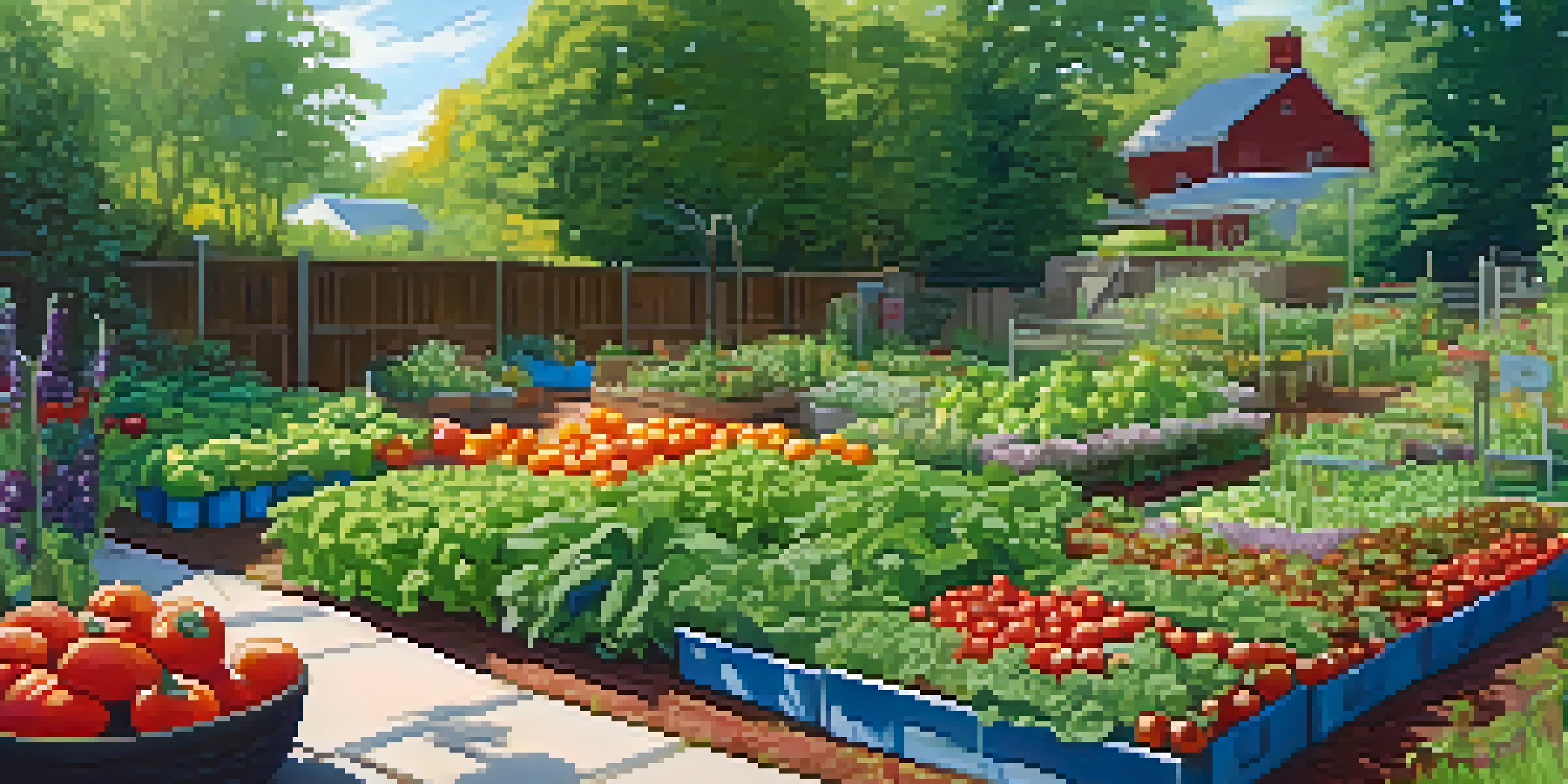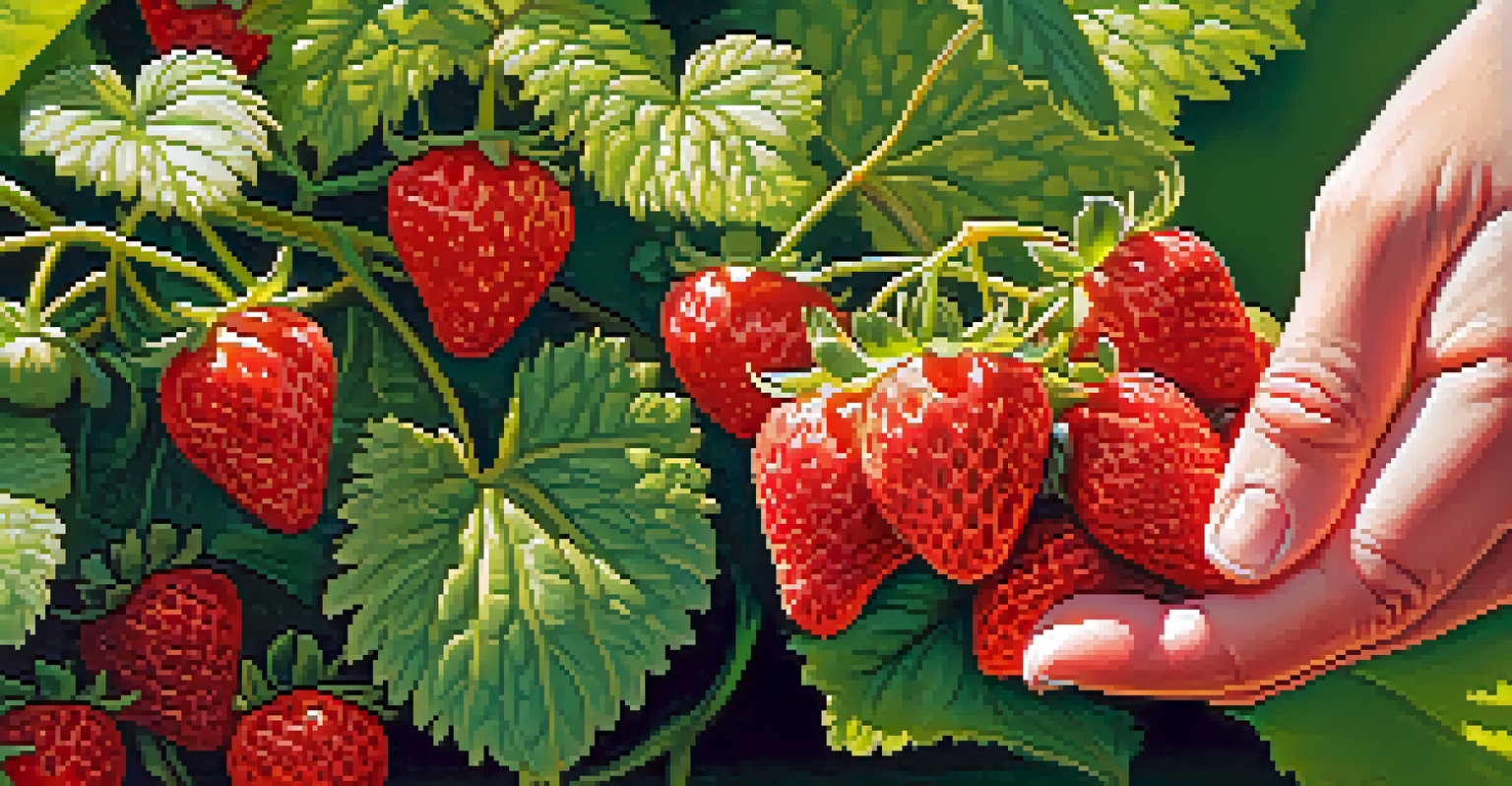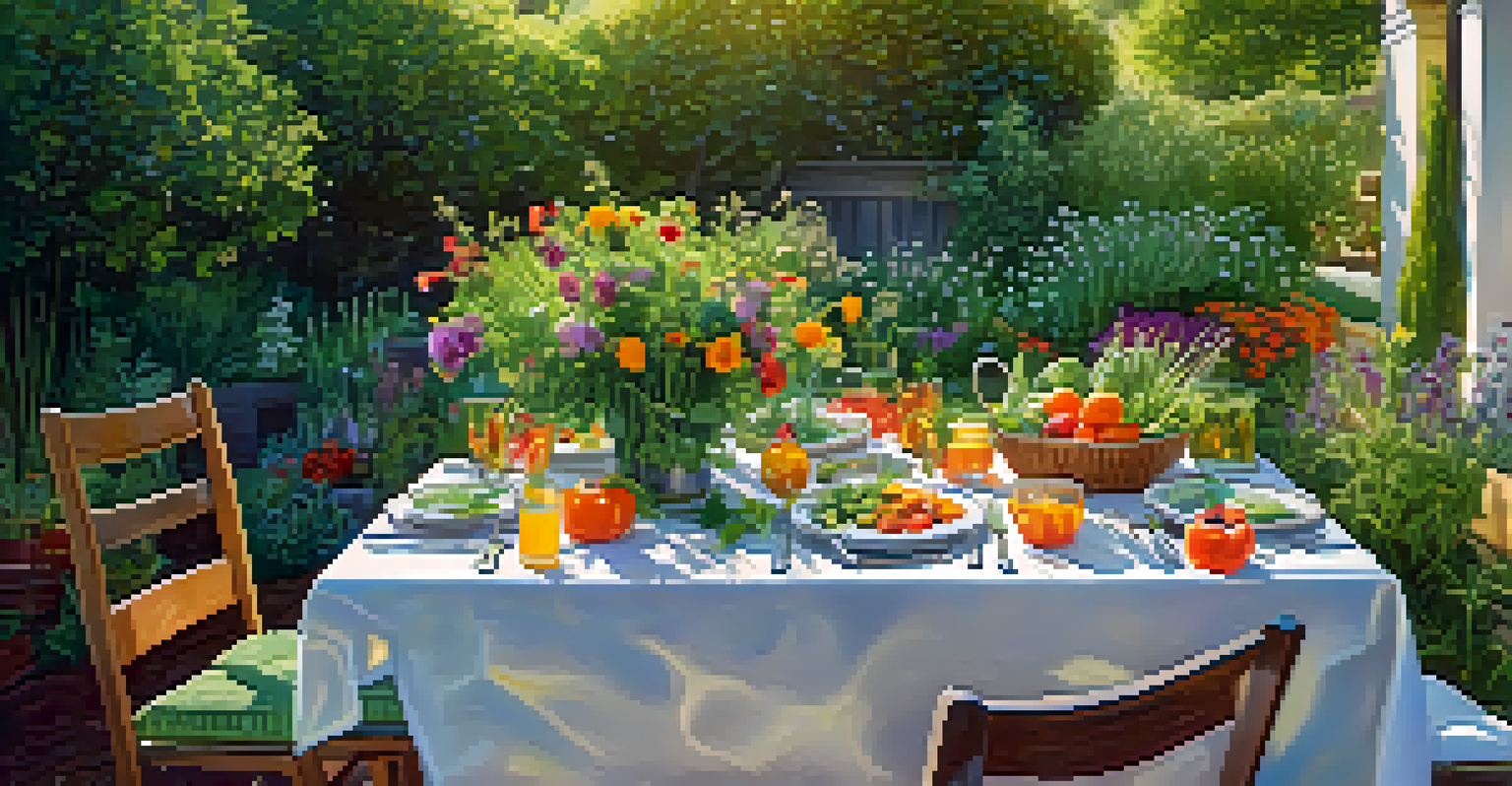How to Design an Edible Landscape for Homeowners

Understanding Edible Landscaping and Its Benefits
Edible landscaping combines food production with ornamental gardening, creating a space that's both beautiful and functional. Imagine walking through your garden and plucking fresh tomatoes or herbs right from the vine instead of heading to the store. This approach not only provides sustenance but also enhances biodiversity, attracting beneficial insects and birds.
To plant a garden is to believe in tomorrow.
One of the biggest benefits of edible landscaping is sustainability. By growing your own food, you reduce reliance on store-bought produce, which often involves long transportation routes and excessive packaging. Plus, it allows you to control what goes into your food, leading to healthier, pesticide-free options right in your backyard.
Additionally, edible landscapes can offer aesthetic appeal. With a thoughtful design, colorful fruits, vibrant vegetables, and fragrant herbs can create a visually stunning garden that changes with the seasons. This unique blend of beauty and utility can transform your outdoor space into a vibrant ecosystem.
Choosing the Right Plants for Your Edible Garden
Selecting the right plants is crucial for a successful edible landscape. Start by considering your local climate and soil conditions, as these factors will dictate what grows best in your area. For instance, if you live in a warmer climate, you might opt for heat-loving crops like peppers and tomatoes, while cooler areas can support leafy greens and root vegetables.

Think about the layout and how plants will interact with one another. Companion planting, where certain plants support each other's growth, can be a great strategy. For example, planting basil alongside tomatoes not only saves space but can also enhance flavor and repel pests, creating a thriving garden ecosystem.
Don’t forget to include perennials, which will return year after year with minimal effort. Herbs like chives and mint, as well as fruit-bearing plants like strawberries or raspberries, can provide ongoing harvests without needing to be replanted. This not only saves time but also adds layers to your edible landscape.
Designing Your Edible Landscape Layout
Creating a thoughtful layout is key to an attractive edible landscape. Start by sketching out your space, considering factors like sunlight, drainage, and accessibility. You might want to place taller plants, such as sunflowers, on the north side so they don’t shade shorter plants, like lettuce, on the south side.
The greatest gift of the garden is the restoration of the five senses.
Incorporating pathways is also essential for easy access to your plants without trampling them. Gravel or mulch paths can help keep the area tidy while allowing you to navigate your garden effortlessly. Think of these paths as the roads of your edible landscape, guiding you to various edible treasures.
Consider layering your plants for visual interest and productivity. A tiered garden can maximize space, with taller plants in the back and shorter ones in the front. This approach not only looks appealing but also ensures that all plants receive adequate sunlight, contributing to a healthier garden.
Incorporating Edible Plants into Existing Landscapes
If you already have a traditional garden, integrating edible plants can enhance its utility without needing a complete overhaul. Look for spaces where ornamental plants could be replaced or paired with edible options. For example, using ornamental kale or flowering herbs can add beauty while also being edible.
Another approach is to intersperse edible plants throughout your landscape. Imagine mixing herbs like rosemary or thyme into your flower beds. They not only provide culinary benefits but also attract pollinators, creating a harmonious blend of beauty and function.
Don’t shy away from using edible plants in containers either. This method allows you to introduce herbs and veggies in small spaces like patios or balconies, making fresh ingredients accessible no matter where you live. Plus, containers can be moved around for optimal sunlight and aesthetic pleasure.
Maintaining Your Edible Landscape Year-Round
Just like any garden, maintaining an edible landscape requires regular care. This includes watering, weeding, and pruning to keep plants healthy and productive. Establishing a routine can help you stay on top of these tasks and ensure your garden flourishes throughout the seasons.
Consider using organic practices to maintain soil health and plant vigor. Techniques like crop rotation, mulching, and composting can enrich your soil while minimizing pests and diseases. Think of your garden as a small ecosystem—healthy soil leads to healthy plants and, ultimately, a bountiful harvest.
As seasons change, be aware of when to plant and harvest your crops. Some plants thrive in the cooler months, while others prefer the warmth of summer. Keeping a gardening calendar can help you plan your planting schedule, ensuring that your edible landscape is productive year-round.
Using Edible Flowers to Enhance Your Landscape
Edible flowers can add a splash of color and a unique flavor to your edible landscape. Plants like nasturtiums, pansies, and calendulas not only beautify your garden but can also be used in salads and garnishes, making your meals more visually appealing and exciting.
Incorporating these flowers can also attract beneficial insects to your garden, helping with pollination and pest control. For example, planting marigolds can deter harmful pests while providing a vibrant pop of color. This symbiotic relationship enhances the health and aesthetics of your edible landscape.
When selecting edible flowers, ensure they're free from pesticides and chemicals, as these can be harmful when consumed. Growing your own edible flowers ensures you know exactly how they were cultivated, allowing you to enjoy their beauty and flavor with peace of mind.
Harvesting and Enjoying Your Edible Landscape
Once your edible landscape is thriving, the joy of harvesting begins! Regularly picking your fruits, vegetables, and herbs not only promotes further growth but also encourages you to incorporate fresh ingredients into your meals. Imagine the satisfaction of cooking with produce you've grown yourself—there’s nothing quite like it!
Experimenting with your harvest can lead to exciting culinary adventures. Try new recipes or preserve your bounty through canning or drying. This not only helps you enjoy your produce for longer but can also be a fun way to share the fruits of your labor with friends and family.

Lastly, don’t forget to savor the experience. Take time to appreciate the beauty of your garden as well as the flavors of your harvest. An edible landscape is not just about productivity; it’s a space for connection to nature, food, and creativity.